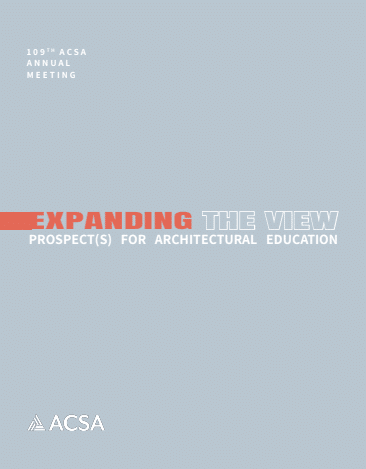Author(s): Ryan Ludwig
This paper argues for a beyond sustainable approach to sub-urban living, rejecting the postwar Levitt style single-family home of the American Dream, to instead consider alternative futures founded on new ideas of community. It questions how architecture may engender lasting opportunities for resilient and eco-egalitarian approaches to sub-urban life, while simultaneously meeting the fundamental needs of its inhabitants. This beyond sustainable rewriting of the Dream suggests a less individualized, more collaborative, more inclusive notion of sub-urban living, questioning many typical arrangements of inside/outside, front/back, public/ private, production/consumption, individual/collective, etc., as seen in American sub-urban tract housing. It will utilize the concept of the productive landscape conceived as a cata-lyst for reconstituting the production of food, water, energy, recreation and social interactions. This approach is illustrated through the work of several third-year undergraduate design studios taught in recent years at the University of Cincinnati, School of Architecture which maintained similar beyond sustainable ambitions. The location for these tests has been Greenhills, OH, one of three “Greenbelt Towns” built as part of Franklin D. Roosevelt’s New Deal Resettlement Administration. While Greenhills was envisioned largely as a response to the question of urban and rural poverty, today, the expanded role of the car, neoliberal global commerce and the increased expectations of comfort and convenience of sub-urban life, alongside its aging, outdated and undersized existing housing stock, have resulted in its decline as a desirable sub-urban living destination. However, its original small-scale walkable planning, many tree lined gently curving streets and cul-de-sacs, central park green, and still intact greenbelt provide substantive community assets from which to consider a beyond sustainable model of sub-urban living, especially in a world undergoing radical change due to anthropogenic global warming, climate destabilization and ecological degradation for which the postwar Levitt style suburb has contributed greatly. In this way its specific history and current shortcomings make Greenhills a timely locale for testing alternative approaches to sub-urban living and indirectly the city.
https://doi.org/10.35483/ACSA.AM.109.75
Volume Editors
ISBN
978-1-944214-37-1

 Study Architecture
Study Architecture  ProPEL
ProPEL 
